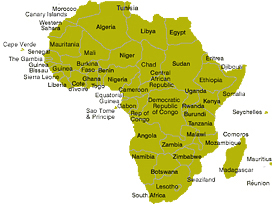| |

France colonized North Africa in stages, and she left it in stages. Her first stop was Algeria, where French colonists settled as early as 1830,- Tunisia followed, but only in 1881, and Morocco was not colonized until 1912. In each country they developed large-scale wine industries. Fifty years later the French were preparing to leave: Tunisia in 1955, Morocco in 1956 and Algeria in 1962. They took with them most of the best winemakers, who settled in Corsica and the Midi and started again; and they left behind them a legacy of French grapes, French tastes and French wine law.
These days that legacy is wearing pretty thin. Islamic fundamentalism is a threat to wine, especially in Algeria, but there have been other blows, too. France had originally envisaged Algeria as a market for French wine, but in the late 19th century Algeria turned supplier instead. Indeed all three colonies exported bulk wine to France, which was widely used for blending with less concentrated, less alcoholic and less well-coloured wine - most famously Burgundy.
When France left, that trade stopped. With little domestic market, each country pulled up vines and sold what it could to the thirsty USSR; but by the late 1980s that outlet, too, was disappearing. General economic decline at home and the rising prices of raw material have been more insidious enemies. In each country the area of wine grapes has shrunk to less than half what it was pre-independence, and yields have fallen as the vineyards have been neglected.
|
|
|
|


